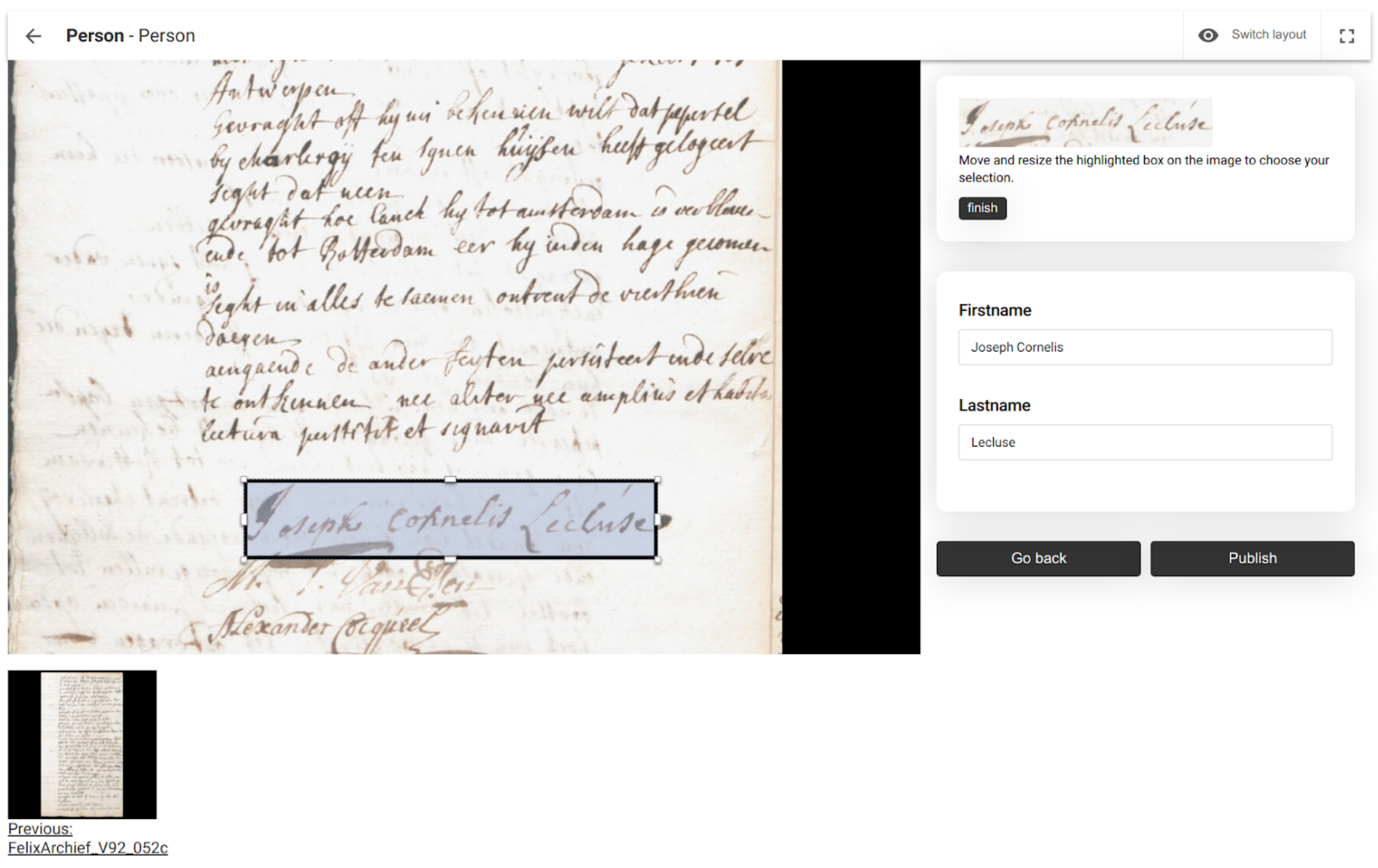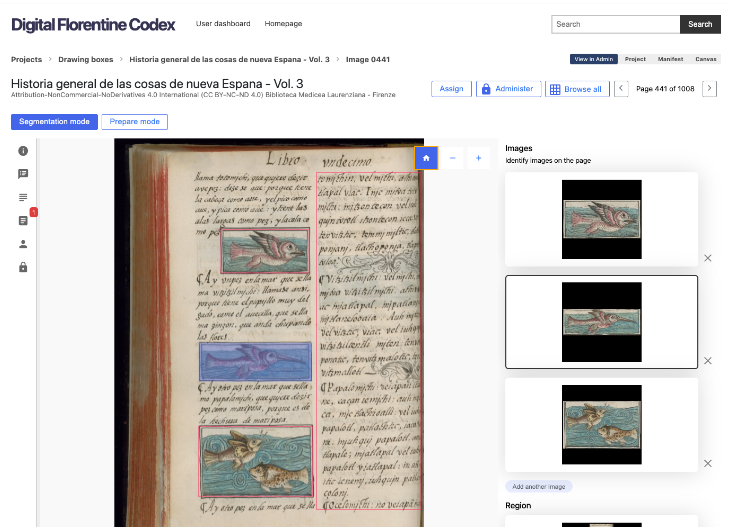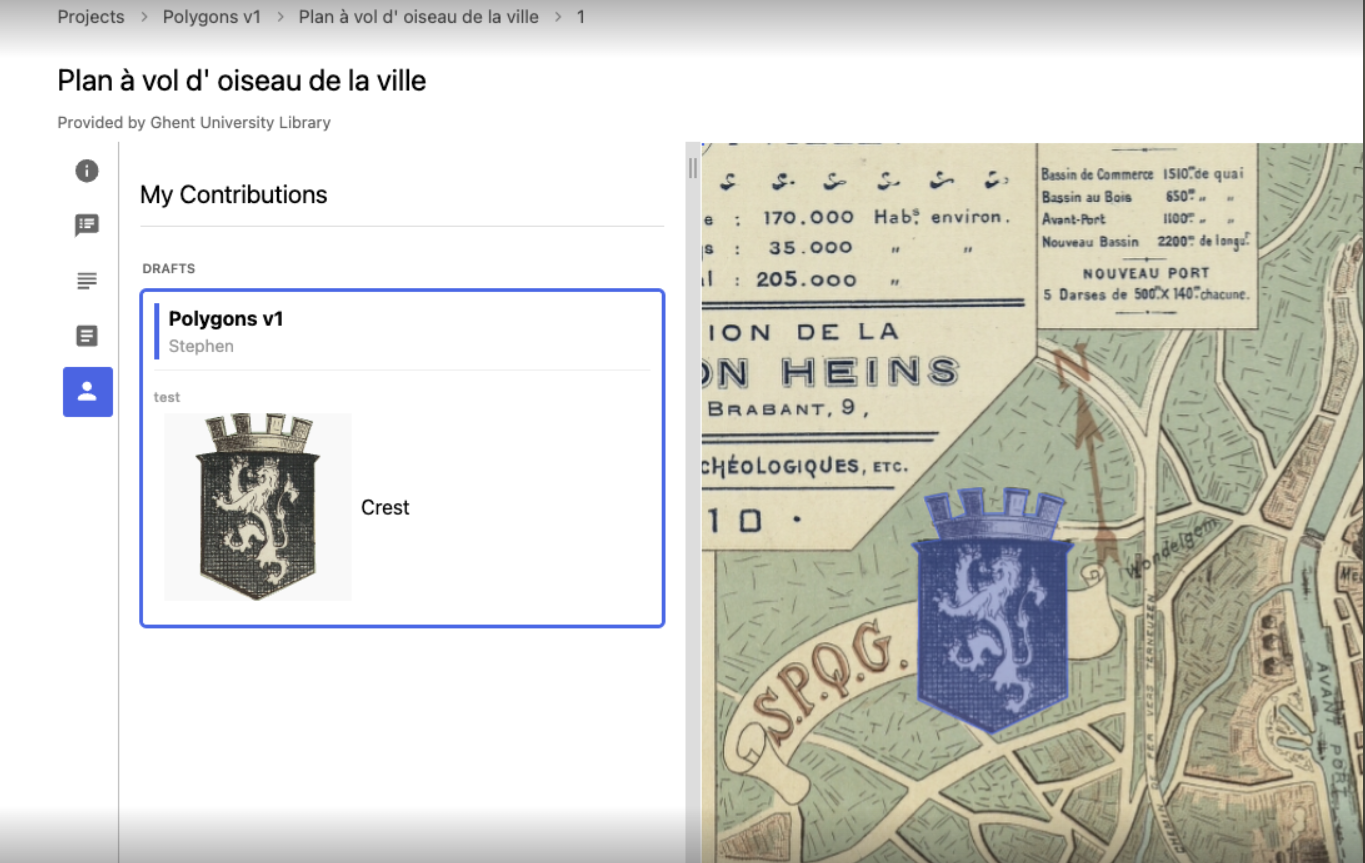About Madoc
Madoc is an Omeka S based platform for the display, enrichment, and curation of IIIF-based digital objects. The platform is a combination of open source services and technology, bound together to provide a single management interface for IIIF collections. Madoc uses well defined Open web standards like IIIF, W3C Web Annotations and Linked Data.

Madoc allows researchers and institutions to set up different kinds of projects, starting from existing IIIF manifests or collections:
- Transcription
- Image segmentation
- Metadata enrichment or harvesting
- Annotation: entity caption via rectangles or polygons
- OCR correction

As project manager, you can:
- Assemble digital collections with IIIF objects from multiple archives, libraries and museums and build an interpretative web site around them.
- Run a crowdsourcing project and invite the public, researchers or students to contribute.
- Create a fully customizable 'capture model' to enrich digital objects and image regions with new transcriptions, translations, entities, tags, commentaries and other material.
- Import and enhance existing metadata and image annotations (such as f.ex. OCR or segmentation) with your own editorial content.
- Showcase and export the enriched digital collection.
Built by Digirati, Madoc is the product of work for several projects/institutions, including:
- DARIAH-VL VRE Service Infrastructure project: Ghent Centre for Digital Humanities & Vrije Universiteit Brussel.
- Indigenous Digital Archive: a project from the Museum of Indian Arts and Culture in Santa Fe, New Mexico, funded by an IMLS National Leadership Grant and a Knight Foundation Prototyping Grant.
- Crowdsourcing Platform for Wales: a project with the National Library of Wales, funded by the Welsh government, to build a reusable IIIF-based crowdsourcing platform.
 Example projects
Example projects
Flanders
- Getuigenissen (Free University of Brussels)
- Gent Verrijkt (Ghent Centre for Digital Humanities)
- De Gentse Morgen (Amsab-Institute for Social History)
- Collectiebibliotheek (Huis van Alijn)
- Gentse prentbriefkaarten (Archive Gent)
- ACEC-collection (Industry Museum Ghent)
- Petitions for the Dutchification of Ghent University (Ghent University Archive)
- Comic books Papa Mfumu'Eto (Ghent University, Michael Meeuwis)
International
- NLW Crowd - Welsh Heritage Crowdsourcing Projects (National Library of Wales)
- CrossAsia (State Library Berlin)
- The Digital Florentine Codex (The Getty)
- The Indigenous Digital Archive (Indigenous National Archives)
Learn more?
- About Madoc
- Madoc on GitHub
- Madoc Documentation and release info
- Madoc Slack community channel
- Possibilities
- This short presentation (2021, 8 min) explores the possibilities of Madoc to enrich the comics of Congolese artist Papa Mfumu'eto.
- Ongoing development
- As a part of their IIIF-trajectory, phase 3 (2022-2023), the Flemish Art Collection explores Madoc's possibilities for a crowdsourcing platform for Flanders in their IIIF Metadata manual.
Get involved?
Want to use Madoc or contribute to its development? Then contact davy.verbeke@ugent.be and christophe.verbruggen@ugent.be.
Involved Team Members: Davy Verbeke, Lise Foket and Frederic Lamsens